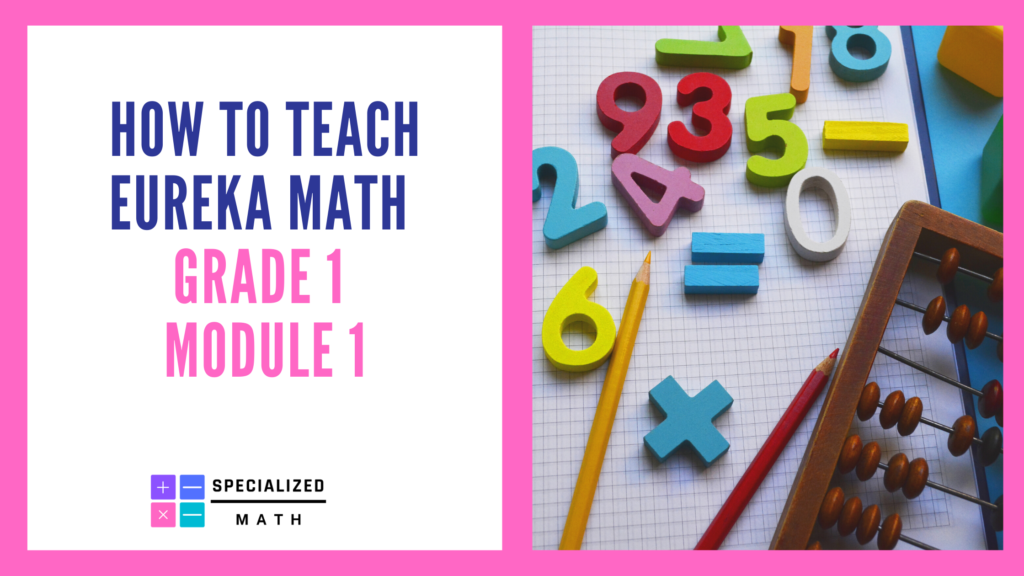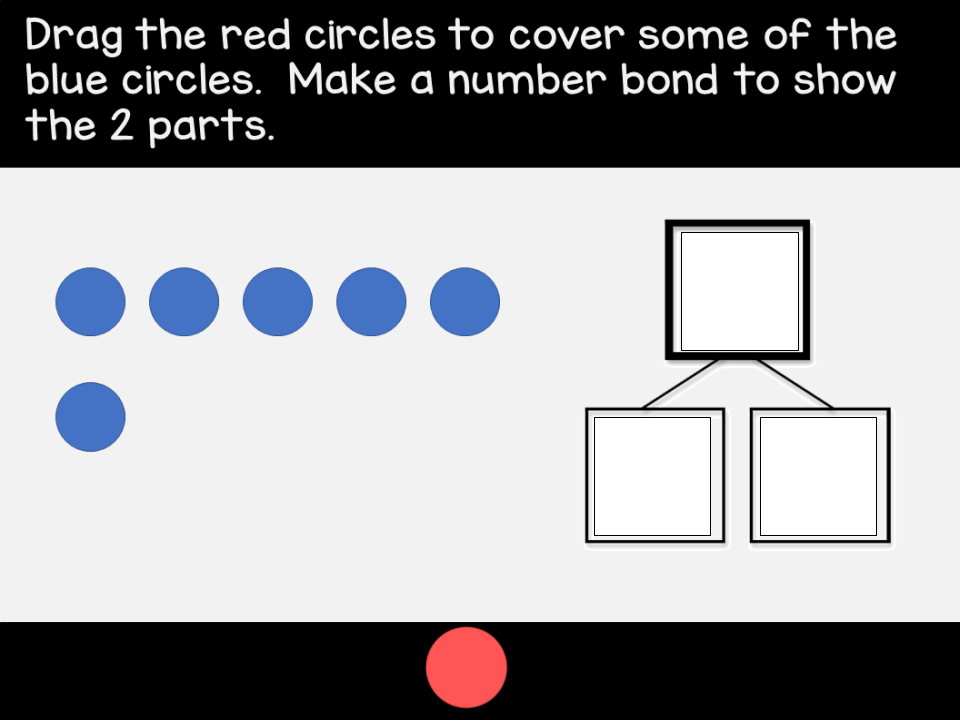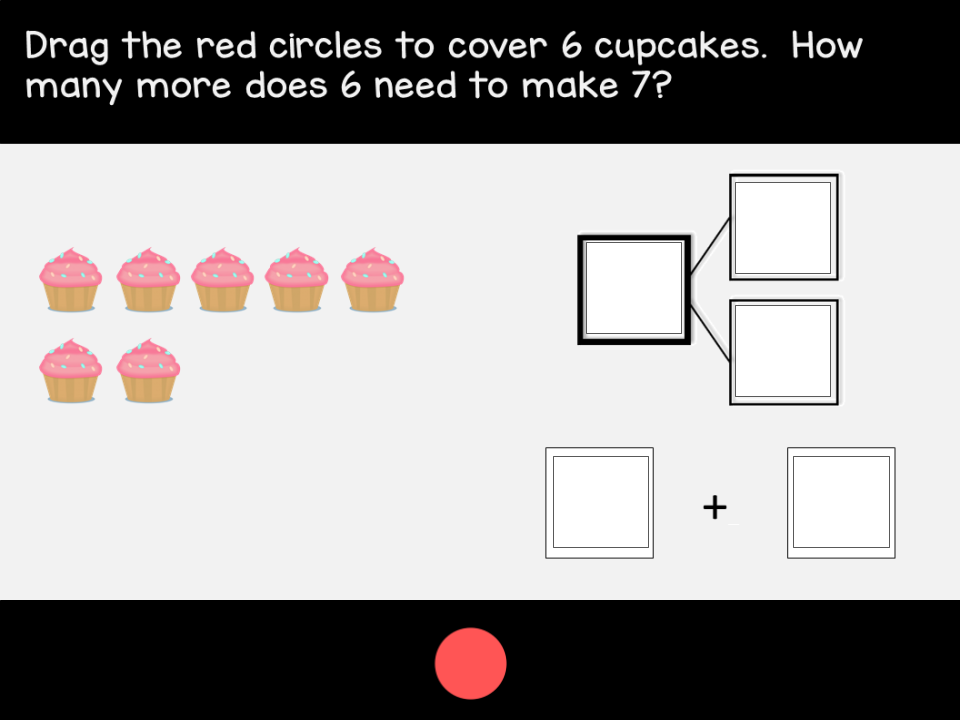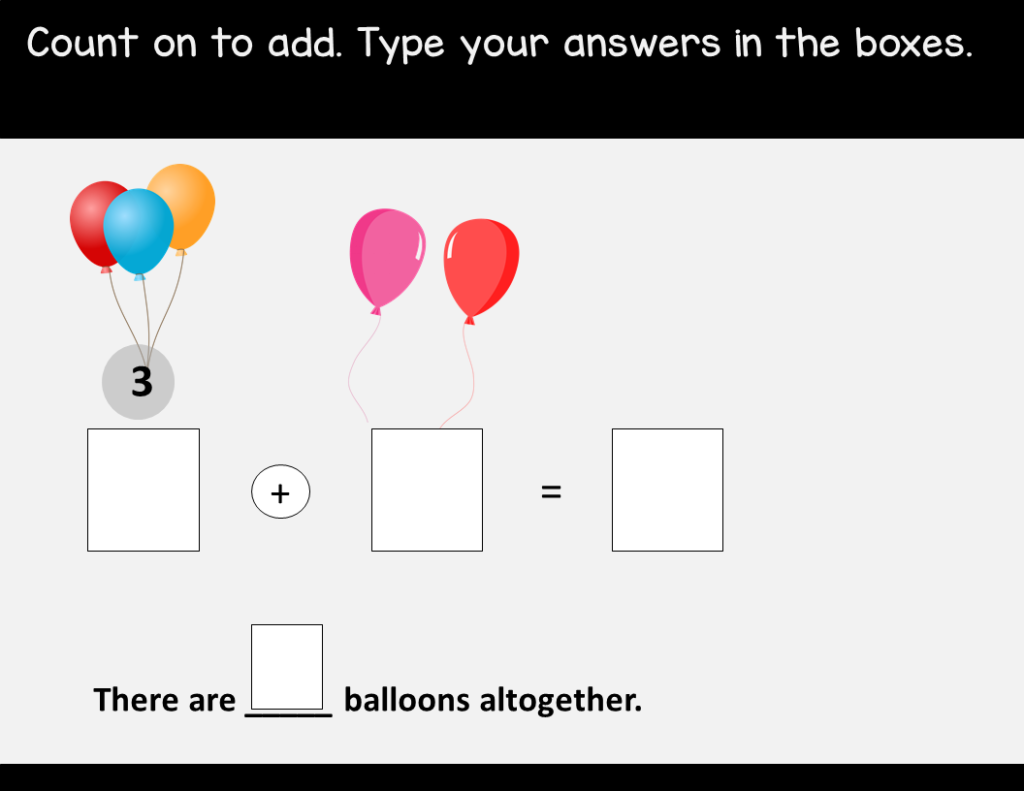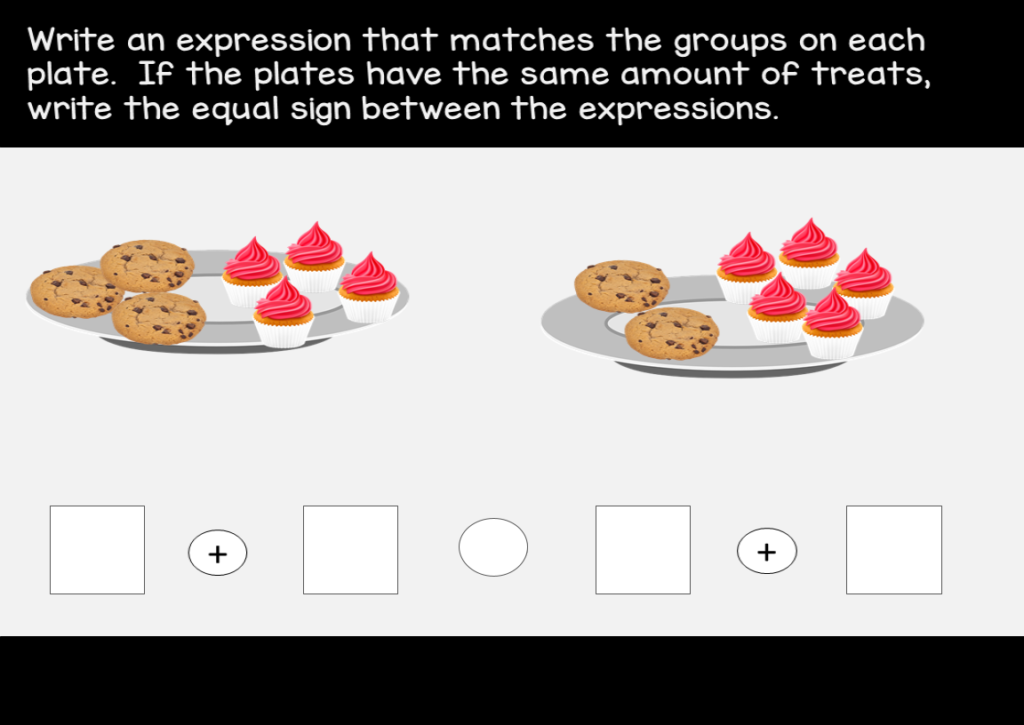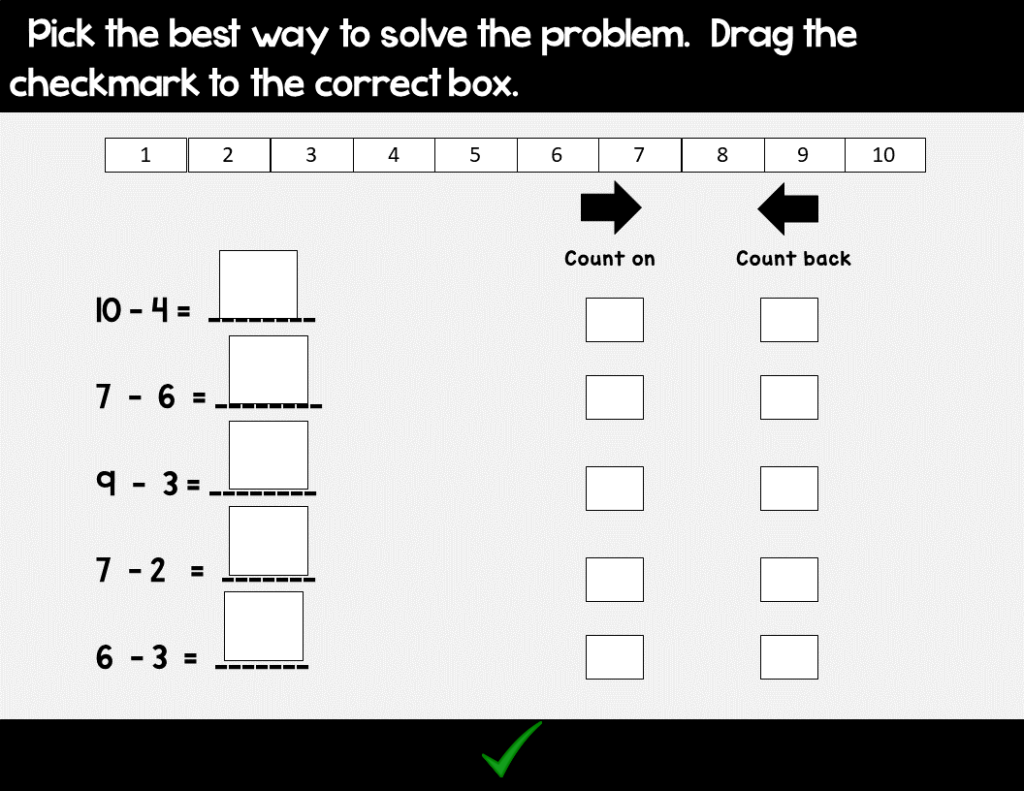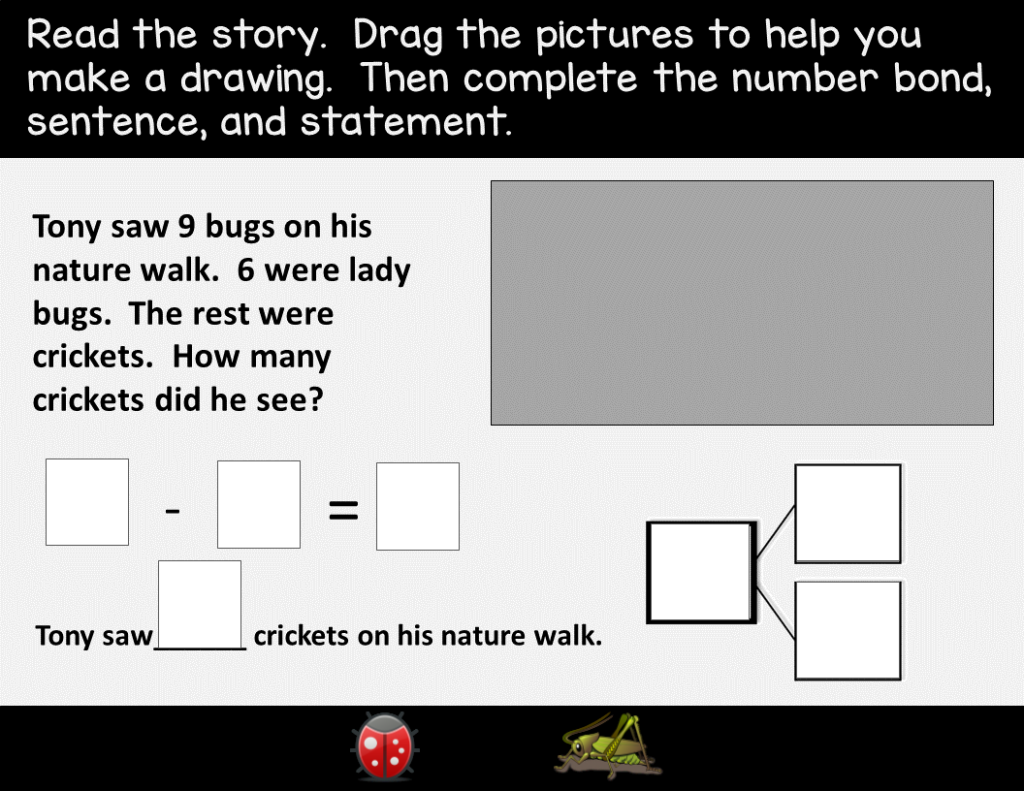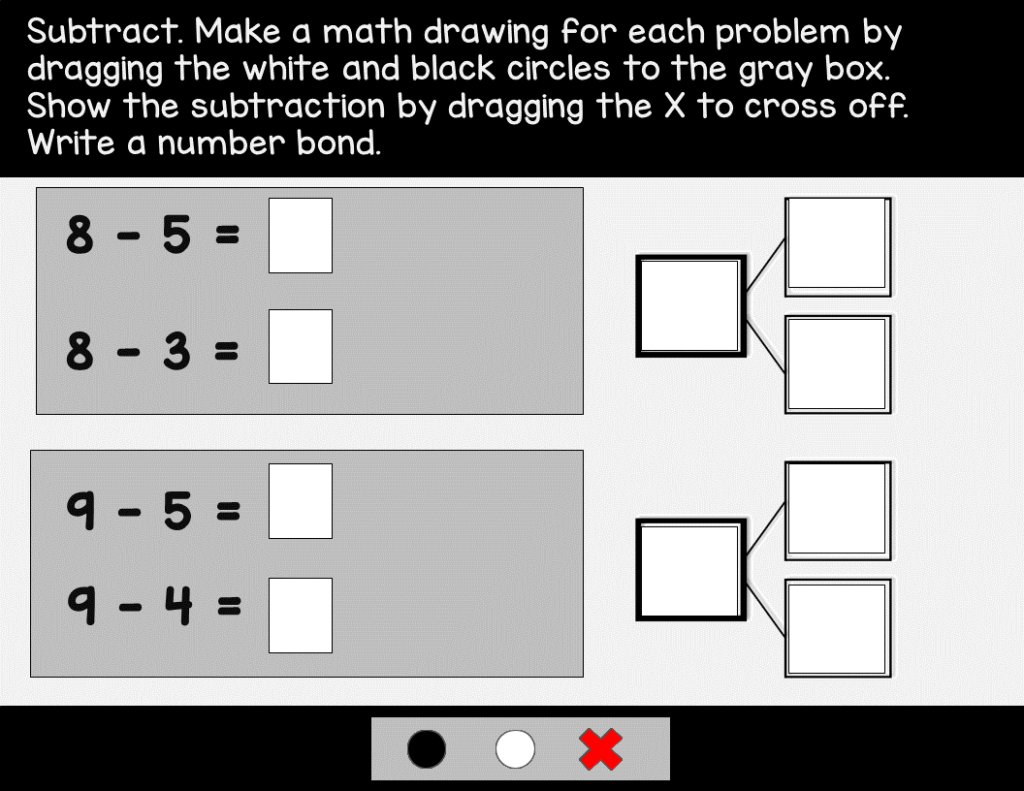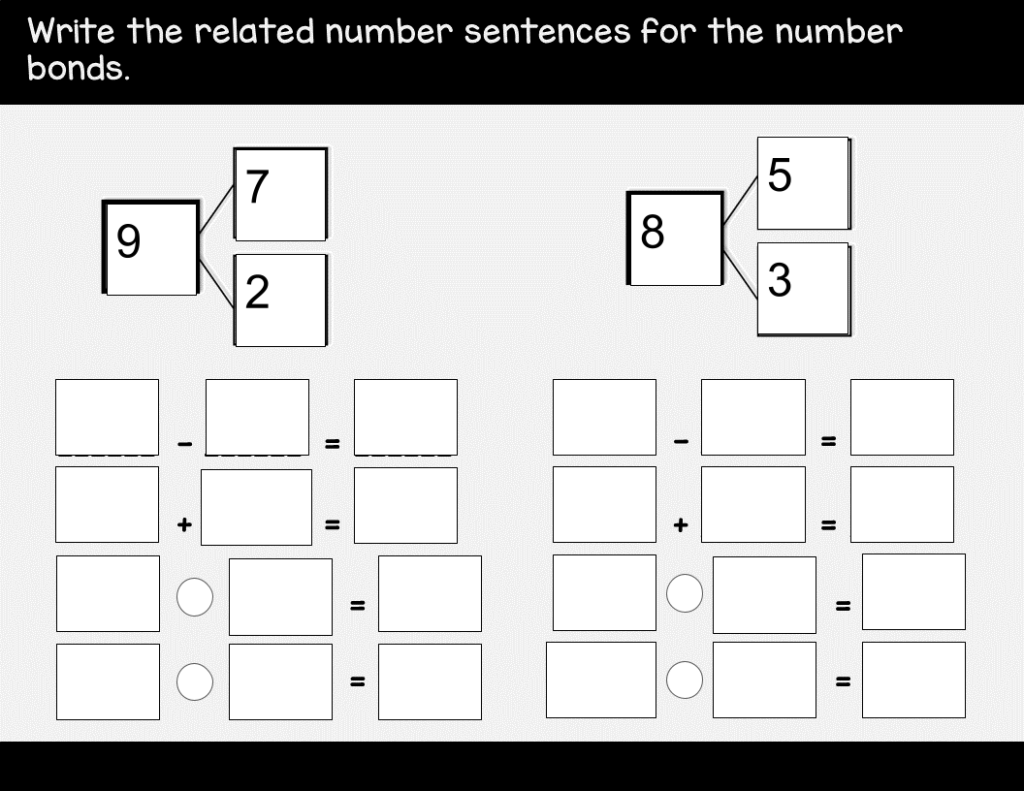Eureka Math Grade 1 is broken into 6 Modules that span the course of the school year. First Graders spend time in Grade 1 developing an understanding of addition, subtraction, and strategies for adding and subtracting within 20.
In first grade, students develop work to understand whole number relationships and place value, including grouping in tens and ones. There is also time spent on developing an understanding of linear measurement and measuring lengths as iterating length units. Students learning Eureka Math Grade 1 also reason about the attributes of, and composing and decomposing geometric shapes.
Eureka Math Grade 1, Module 1 starts with students working to further understand the meaning of addition and subtraction, which is work that they began in Kindergarten Module 4. Students work with addition and subtraction within the context of First Grade word problems. Students also begin building fluency with addition and subtraction facts—which lays the foundation for success in future grades.

Focus Standards
The focus standards for Grade 1, Module 1 are:
1.OA.1 Use addition and subtraction within 20 to solve word problems involving situations of adding to, taking from, putting together, taking apart and comparing, with unknowns in all positions, e.g., by using objects, drawings and equations with a symbol for the unknown number to represent the problem.
1.OA.3 Apply properties of operations as strategies to add and subtract. (Students need not use formal terms for these properties.) Examples: If 8 + 3 = 11 is known, then 3 + 8 = 11 is also known. (Commutative property of addition.) To add 2 + 6 + 4, the second two numbers can be added to make a ten, so 2 + 6 + 4 = 2 + 10 = 12. (Associative property of addition.)
1.OA.5 Relate counting to addition and subtraction (e.g., by counting on 2 to add 2).
1.OA.6 Add and subtract within 20, demonstrating fluency for addition and subtraction within 10. Use strategies such as counting on; making ten (e.g., 8 + 6 = 8 + 2 + 4 = 10 + 4 = 14); decomposing a number leading to a ten (e.g., 13 – 4 = 13 – 3 – 1 = 10 – 1 = 9); using the relationship between addition and subtraction (e.g., knowing that 8 + 4 = 12, one knows 12 – 8 = 4); and creating equivalent but easier or known sums (e.g., adding 6 + 7 by creating the known equivalent 6 + 6 + 1 = 12 + 1 = 13).
1.OA.7 Understand the meaning of the equal sign, and determine if equations involving addition and subtraction are true or false. For example, which of the following equations are true and which are false? 6 = 6, 7 = 8 – 1, 5 + 2 = 2 + 5, 4 + 1 = 5 + 2.
1.OA.8 Determine the unknown whole number in an addition or subtraction equation relating three whole numbers. For example, determine the unknown number that makes the equation true in each of the equations 8 + ? = 11, 5 = ? – 3, 6 + 6 = ?.
The foundational standards, or standards that students should have mastered prior to engaging in this module are:
Prerequisite Standards
K.CC.2 Count forward beginning from a given number within the known sequence (instead of having to begin at 1).
K.CC.4b Understand that the last number name said tells the number of objects counted. The number of objects is the same regardless of their arrangement or the order in which they were counted.
K.CC.4c Understand that each successive number name refers to a quantity that is one larger.
K.OA.3 Decompose numbers less than or equal to 10 into pairs in more than one way, e.g., by using objects or drawings, and record each decomposition by a drawing or equation (e.g., 5 = 2 + 3 and 5 = 4 + 1).
K.OA.4 For any number from 1 to 9, find the number that makes 10 when added to the given number, e.g., by using objects or drawings, and record the answer with a drawing or equation.
K.OA.5 Fluently add and subtract within 5.
If students have not yet mastered these foundational skills, teachers may want revisit Eureka Math Kindergarten Module 4. Pulling lessons from Kindergarten Module 4 for pre-teaching in a small group can support students, especially those with math disabilities and difficulties with being successful in the Eureka Math Grade 1 content.
Knowing prerequisite standards, is also a great way to focus on standards-based IEP Goals and Objectives for students with math disabilities.
Vocabulary
Newly introduced vocabulary for Kindergarten Module 4 include: count on, track, expression, addend, doubles, and doubles plus 1.
Topics for Eureka Math Grade 1 Module 1
Eureka Math First Grade, Module 1 is then broken down into ten Topics:
Topic A – Embedded Numbers and Decompositions
Students work to fluently adding and subtracting numbers between 1 and 10. Students also learn how to break apart a total into two parts, or addends. For example, 9 can be broken apart into 6 and 3, since 6 + 3= 9. Students begin to understand that a number can be broken apart in multiple ways.
Topic B – Counting On from Embedded Numbers
Students learn how to show all the number pairs or partners “inside” the numbers 6, 7, 8, 9, and 10 (e.g., 7: 6 and 1, 5 and 2, 4 and 3). Students also use number bonds and addition expressions to model how two parts make a total. They will count on from the first addend, or part, to find the total.
Topic C – Addition Word Problems
Students solve various word problems in which there is a change to either the whole or a part. Students use a drawing, a number bond, and a number sentence to solve problems. Students continue to use 5-group cards to help them count on to solve problems.
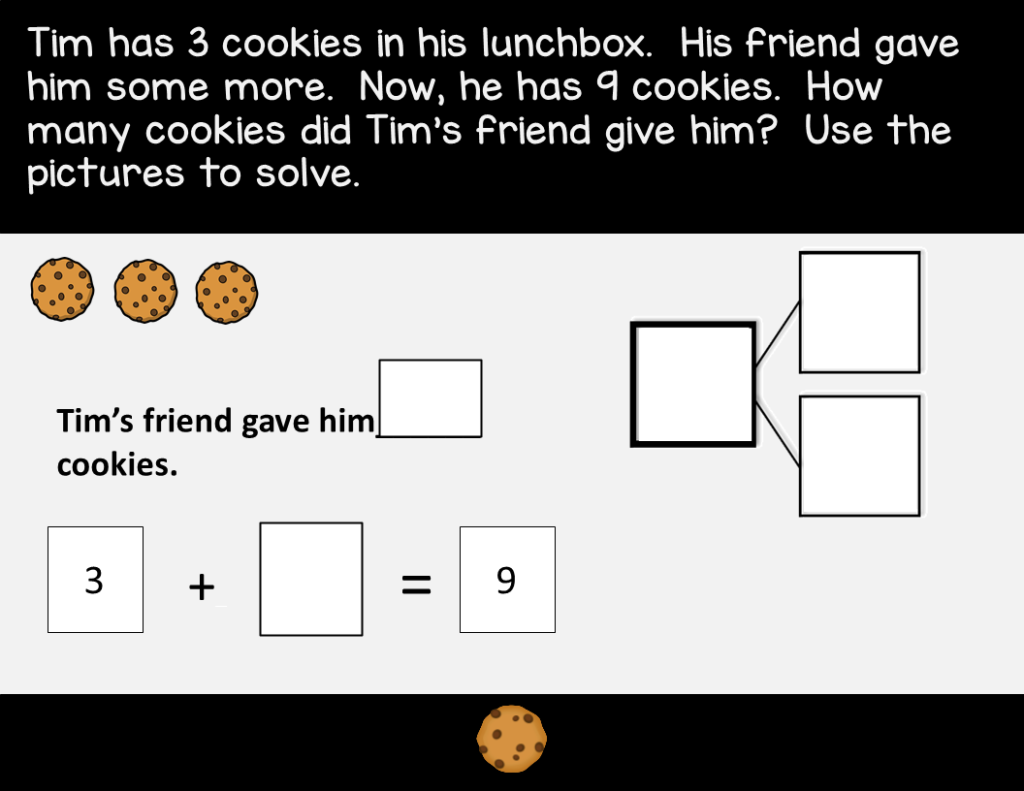
Topic D – Strategies for Counting On
Students continue to count on to add. Students learn two specific strategies to help them count on efficiently. They may use their 5-group cards and tap to count on, or use their fingers to count on from a given number.
Topic E – The Commutative Property of Addition and the Equal Sign
Students continue to learn about the equal sign, by using the equal sign to write true number sentences. For example, 4 + 3 = 3 + 4. Students see that when added together, the two numbers make the same total, regardless of their order. Students begin to add efficiently by starting with the larger addend, and then counting on: “I can count on 2 from 7 when I solve 2 + 7.”
Topic F – Development of Addition Fluency Within 10
Students learn strategies to help us fluently solve addition problems up to 10. They also use an addition chart to explore patterns and make connections between addition facts.
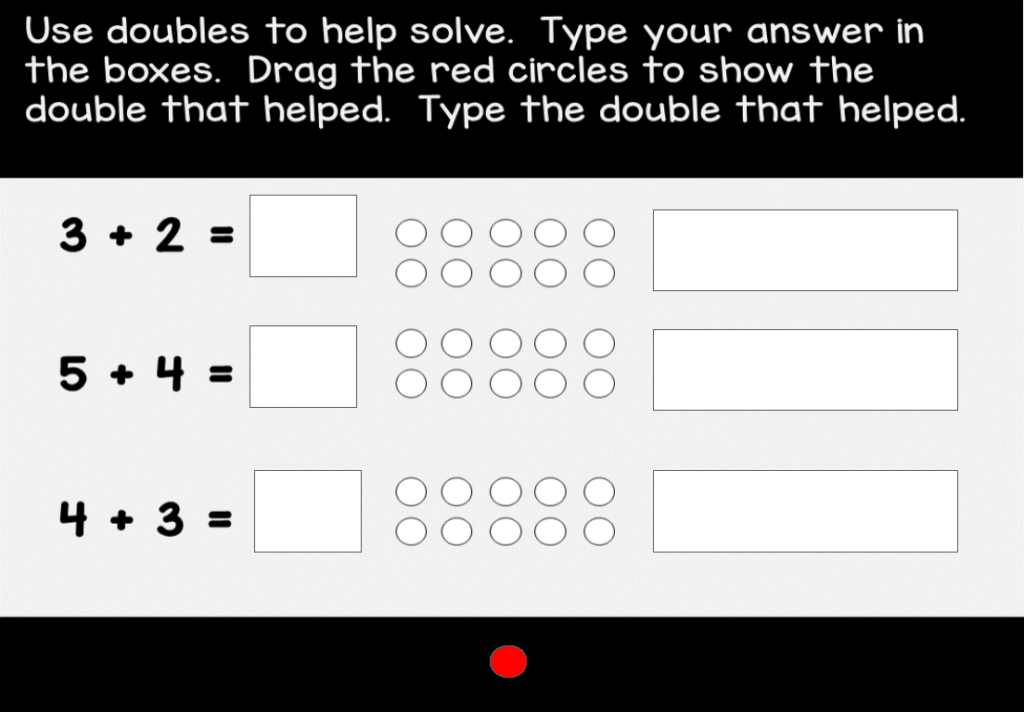
Topic G – Subtraction as an Unknown Addend Problem
Students explore the meaning of subtraction as it relates to addition. Students solve a subtraction problem efficiently by either counting on or counting back on the number path. For example, to solve 9 – 8 it may be more efficient to think 8 + ? = 9 and count on from 8 rather than count back from 9.
Topic H – Subtraction Word Problems
Students connect subtraction to addition using various types of story problems. Students will make simple math drawings, such as circles, and use number sentences to represent the problem and solution. They will draw number bonds to model the parts and whole in each problem.
Topic I – Decomposition Strategies for Subtraction
Students will learn, use, and discuss strategies for fluent subtraction up to 10. They learn methods that involve subtracting 0 and 1, subtracting the whole number (e.g., 5 – 5 = 0), and subtracting one less than the whole number (e.g., 5 – 4 = 1). Students continue to use familiar 5-groups and partners to 10.
Topic J – Development of Subtraction Fluency Within 10
Students explore the addition chart and look for patterns. They will learn to use the addition chart to solve subtraction problems and find related number sentences.
Teaching Eureka Math Grade 1 Module 1 Virtually
Eureka Math is a comprehensive mathematics curriculum that is used by many school districts all over the country. However, teaching Common Core Math during the pandemic has been a challenge for many teachers.
Whether hybrid or virtual, it is difficult to deliver any math curriculum without some form of digital modification or adjustments, especially for students with math disabilities. That is why we created these standards-based digital math practice problems that can also be correlated to the Eureka Math curriculum.
These problems are created using Google Slides and include virtual manipulatives which can help with making your digital math lessons more engaging. These digital problem sets are also perfect for assigning for a technology center during in-person learning or for additional practice at home when students.
If you would like to view more products that help with supporting students with math, check out our Teachers Pay Teachers Store.

Disclaimer: We are not affiliated with Eureka Math or Greatminds.org. The views included in this post and on this website are just our take on making this widely used mathematics curriculum accessible for students with math disabilities and learning difficulties.

